33 Vegetables High in Fiber
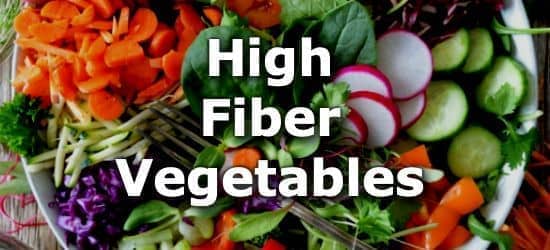
Vegetables are arguably the healthiest of all the food groups and are a great source of fiber.
Eating more fiber significantly decreases the risk of heart disease, colon cancer, and other serious medical conditions. (1) At the same time, a high fiber diet supports gut health.
Unfortunately, research has shown that only about 5% of the US population is currently meeting recommended targets for fiber intake. (2)
Vegetables high in fiber include lima beans, acorn squash, green peas, collard greens, artichokes, parsnips, broccoli, carrots, spinach, and more. The current daily value (DV) for fiber is 28 grams. (3)
Below is a list of 33 vegetables high in fiber. For more, see the article on high fiber foods and also the list of 200 fiber rich vegetables.
List of Vegetables High in Fiber
 1 Lima (Butter) Beans
1 Lima (Butter) Beans| Fiber per Cup Cooked | Fiber per 100g | Fiber per 200 Calories |
|---|---|---|
| 9g (33% DV) | 5g (19% DV) | 9g (31% DV) |
 2 Acorn Squash
2 Acorn Squash| Fiber per Cup Cooked | Fiber per 100g | Fiber per 200 Calories |
|---|---|---|
| 9g (32% DV) | 4g (16% DV) | 16g (56% DV) |
 3 Green Peas
3 Green Peas| Fiber per Cup Cooked | Fiber per 100g | Fiber per 200 Calories |
|---|---|---|
| 9g (31% DV) | 6g (20% DV) | 13g (47% DV) |
 4 Collard Greens
4 Collard Greens| Fiber per Cup Cooked | Fiber per 100g | Fiber per 200 Calories |
|---|---|---|
| 8g (27% DV) | 4g (14% DV) | 24g (87% DV) |
 5 Artichokes (Globe or French)
5 Artichokes (Globe or French)| Fiber in a Medium Artichoke | Fiber per 100g | Fiber per 200 Calories |
|---|---|---|
| 7g (25% DV) | 5g (19% DV) | 23g (82% DV) |
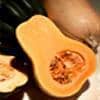 6 Butternut Squash
6 Butternut Squash| Fiber per Cup Cooked | Fiber per 100g | Fiber per 200 Calories |
|---|---|---|
| 7g (23% DV) | 3g (11% DV) | 16g (57% DV) |
 7 Parsnips
7 Parsnips| Fiber per Cup | Fiber per 100g | Fiber per 200 Calories |
|---|---|---|
| 7g (23% DV) | 5g (18% DV) | 13g (47% DV) |
 8 Kale
8 Kale| Fiber per Cup Cooked | Fiber per 100g | Fiber per 200 Calories |
|---|---|---|
| 5g (19% DV) | 4g (14% DV) | 22g (79% DV) |
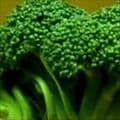 9 Broccoli
9 Broccoli| Fiber per Cup Cooked | Fiber per 100g | Fiber per 200 Calories |
|---|---|---|
| 5g (18% DV) | 3g (12% DV) | 19g (67% DV) |
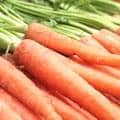 10 Carrots
10 Carrots| Fiber per Cup Cooked | Fiber per 100g | Fiber per 200 Calories |
|---|---|---|
| 5g (17% DV) | 3g (11% DV) | 17g (61% DV) |
 11 Spinach
11 Spinach| Fiber per Cup Cooked | Fiber per 100g | Fiber per 200 Calories |
|---|---|---|
| 4g (15% DV) | 2g (9% DV) | 21g (75% DV) |
 12 Beet Greens
12 Beet Greens| Fiber per Cup Cooked | Fiber per 100g | Fiber per 200 Calories |
|---|---|---|
| 4g (15% DV) | 3g (10% DV) | 21g (77% DV) |
 13 Brussels Sprouts
13 Brussels Sprouts| Fiber per Cup Cooked | Fiber per 100g | Fiber per 200 Calories |
|---|---|---|
| 4g (14% DV) | 3g (9% DV) | 14g (52% DV) |
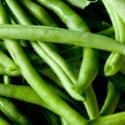 14 Green (Snap) Beans
14 Green (Snap) Beans| Fiber per Cup Cooked | Fiber per 100g | Fiber per 200 Calories |
|---|---|---|
| 4g (14% DV) | 3g (11% DV) | 18g (65% DV) |
 15 Okra
15 Okra| Fiber per Cup Cooked | Fiber per 100g | Fiber per 200 Calories |
|---|---|---|
| 4g (14% DV) | 3g (9% DV) | 23g (81% DV) |
 16 Sweet Potatoes
16 Sweet Potatoes| Fiber per Cup | Fiber per 100g | Fiber per 200 Calories |
|---|---|---|
| 4g (14% DV) | 3g (11% DV) | 7g (25% DV) |
 17 Swiss Chard
17 Swiss Chard| Fiber per Cup Cooked | Fiber per 100g | Fiber per 200 Calories |
|---|---|---|
| 4g (13% DV) | 2g (8% DV) | 21g (75% DV) |
 18 Baked Potatoes
18 Baked Potatoes| Fiber in a Medium Potato | Fiber per 100g | Fiber per 200 Calories |
|---|---|---|
| 4g (13% DV) | 2g (8% DV) | 5g (16% DV) |
 19 Asparagus
19 Asparagus| Fiber per Cup Cooked | Fiber per 100g | Fiber per 200 Calories |
|---|---|---|
| 4g (13% DV) | 2g (7% DV) | 18g (65% DV) |
 20 White Button Mushrooms
20 White Button Mushrooms| Fiber per Cup Cooked | Fiber per 100g | Fiber per 200 Calories |
|---|---|---|
| 3g (12% DV) | 2g (8% DV) | 16g (56% DV) |
 21 Turnips
21 Turnips| Fiber per Cup Cooked | Fiber per 100g | Fiber per 200 Calories |
|---|---|---|
| 3g (11% DV) | 2g (7% DV) | 18g (65% DV) |
 22 Rutabagas (Swedes, Neeps)
22 Rutabagas (Swedes, Neeps)| Fiber per Cup Cooked | Fiber per 100g | Fiber per 200 Calories |
|---|---|---|
| 3g (11% DV) | 2g (6% DV) | 12g (43% DV) |
 23 Sweet Corn
23 Sweet Corn| Fiber per Cup Cooked | Fiber per 100g | Fiber per 200 Calories |
|---|---|---|
| 3g (10% DV) | 2g (7% DV) | 5g (17% DV) |
 24 Fennel
24 Fennel| Fiber per Cup | Fiber per 100g | Fiber per 200 Calories |
|---|---|---|
| 3g (10% DV) | 3g (11% DV) | 20g (71% DV) |
 25 Eggplant (Aubergine)
25 Eggplant (Aubergine)| Fiber per Cup Cooked | Fiber per 100g | Fiber per 200 Calories |
|---|---|---|
| 2g (9% DV) | 3g (9% DV) | 14g (51% DV) |
 26 Cabbage
26 Cabbage| Fiber per Cup Raw | Fiber per 100g | Fiber per 200 Calories |
|---|---|---|
| 2g (8% DV) | 3g (9% DV) | 20g (71% DV) |
 27 Cauliflower
27 Cauliflower| Fiber per Cup | Fiber per 100g | Fiber per 200 Calories |
|---|---|---|
| 2g (8% DV) | 2g (7% DV) | 16g (57% DV) |
 28 Zucchini (Courgette)
28 Zucchini (Courgette)| Fiber per Cup Cooked | Fiber per 100g | Fiber per 200 Calories |
|---|---|---|
| 2g (6% DV) | 1g (4% DV) | 13g (48% DV) |
 29 Tomatoes
29 Tomatoes| Fiber per Cup Cooked | Fiber per 100g | Fiber per 200 Calories |
|---|---|---|
| 2g (6% DV) | 1g (4% DV) | 13g (48% DV) |
 30 Green Bell Peppers
30 Green Bell Peppers| Fiber per Cup Cooked | Fiber per 100g | Fiber per 200 Calories |
|---|---|---|
| 2g (6% DV) | 1g (4% DV) | 9g (31% DV) |
 31 Leeks
31 Leeks| Fiber per Cup | Fiber per 100g | Fiber per 200 Calories |
|---|---|---|
| 2g (6% DV) | 2g (6% DV) | 6g (21% DV) |
 32 Celery
32 Celery| Fiber per Cup Raw | Fiber per 100g | Fiber per 200 Calories |
|---|---|---|
| 1g (4% DV) | 2g (6% DV) | 23g (82% DV) |
 33 Lettuce
33 Lettuce| Fiber per Cup | Fiber per 100g | Fiber per 200 Calories |
|---|---|---|
| 1g (4% DV) | 2g (8% DV) | 25g (88% DV) |
How much fiber do you need each day?
The daily value (DV) for fiber is 28 grams per day. (3) This is the amount shown on food labels to help the average person compare the health benefits of different foods. However, for many people, this amount is actually too low.
The adequate intake (AI) is a more accurate daily target, and varies by age and gender. The AI for fiber is up to 38 grams per day. (4) We've included the specific values below for various groups below, so you can determine what your personal target should be.
In the US, the average person consumes far less than the DV for fiber, let alone the AI for their demographic group.
The Percent Daily Value (%DV) is shown on food labels to help the "average" consumer compare foods, while the adequate intake (AI) is meant to give people a more accurate daily target by age and gender. In this case, the daily value for fiber is probably set too low and should be revised higher by the FDA.
Here is the breakout of the adequate intake by age and gender for fiber: (4)
| Life Stage | RDA |
|---|---|
| Children | |
| 1-3 years old | 19g |
| 4-8 years old | 25g |
| Males | |
| 9-13 years old | 31g |
| 14-50 years old | 38g |
| 50+ years old | 30g |
| Females | |
| 9-18 years old | 26g |
| 19-50 years old | 25g |
| 50+ years old | 21g |
| Pregnancy | |
| 14-50 years old | 29g |
| Lactation | |
| 14-50 years old | 29g |
About the Data
Data for the curated food lists comes from the USDA Food Data Central Repository.
You can check our data against the USDA by clicking the (Source) link at the bottom of each food listing.
Note: When checking data please be sure the serving sizes are the same. In the rare case you find any difference, please contact us and we will fix it right away.
About Nutrient Targets
Setting targets can provide a guide to healthy eating.
Some of the most popular targets include:- Daily Value (%DV) - The daily value (%DV) is a general guideline for consumption that will prevent deficiency of a particular nutrient in most people. The %DV refers to the percentage of an amount that's found in a single serving of a food. It also accounts for absorption factors. It is set by the U.S. FDA.
- Recommended Dietary Allowance (%RDA) - The RDA sets an average daily dietary intake level that is sufficient to meet the nutrient requirements of nearly all (97.5%) healthy individuals. It's more specific than the daily value, and varies by age and gender. The RDA is set by the US National Instutites of Health.
- Reference Dietary Intake (%RDI) -The reference dietary intake is similar to the recommended daily allowance, but is specific to age and gender. The RDI for amino acids is set by the U.N. World Health Organization.
- Adequate Intake (%AI) - This value is primarily used in reference to omega-3 and omega-6 fats. The Adequate Intake is set by the U.S. Institute of Medicine. Because there is less evidence to determine the ideal targets for consumption of these nutrients, the specific amount is considered to be less reliable. Using the term Adequate Intake, rather than one of the other terms, helps to emphasize that the ideal intake of that particular nutrient has not yet been scientifically determined.
See the Guide to Recommended Daily Intakes for more information.
Want to set your own targets? Sign up for an account and set custom targets in the daily meal planner.From the Nutrient Ranking Tool
Use the ranking tool links below to select foods and create your own food list to share or print.
- Foods High in Fiber
- Foods Low in Fiber
- Vegetables High in Fiber
- Fruits High in Fiber
- Vegetarian Foods High in Fiber
- Nuts High in Fiber
- Grains High in Fiber
- Beans High in Fiber
- Breakfast Cereals High in Fiber
- Fast Foods High in Fiber
View more nutrients with the nutrient ranking tool, or see ratios with the nutrient ratio tool.
Related
Data Sources and References
- Thomas M. Barber, Stefan Kabisch, Andreas F. H. Pfeiffer and Martin O. Weickert The Health Benefits of Dietary Fibre Nutrients. 2020 Oct; 12(10): 3209.
- Diane Quagliani, MBA, RDN, LDN and Patricia Felt-Gunderson, MS, RDN, LDN Closing America’s Fiber Intake Gap Am J Lifestyle Med. 2017 Jan-Feb; 11(1): 80–85. Published online 2016 Jul 7. doi: 10.1177/1559827615588079
- FDA on Daily Values
- Institute of Medicine Dietary Reference Intakes
- U.S. Agricultural Research Service Food Data Central
Try the recipe nutrition calculator, or daily meal planner.
Create a free account to log and track foods.

